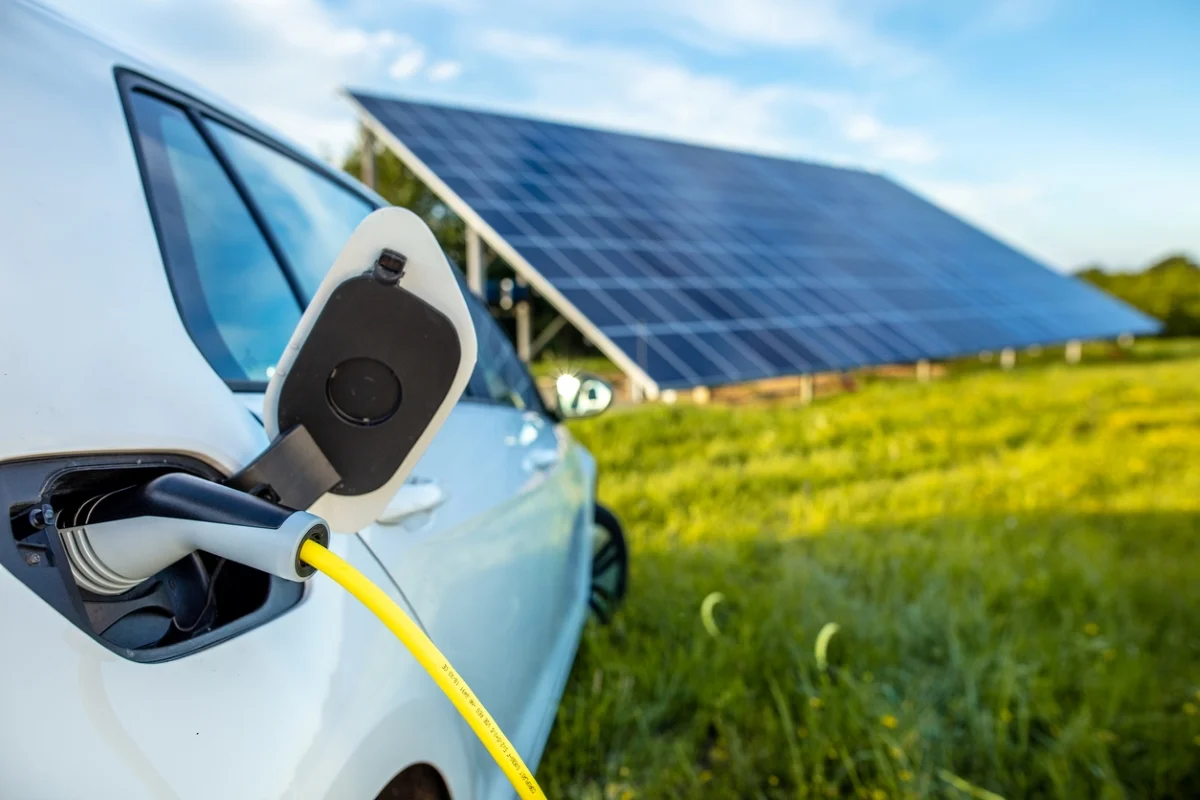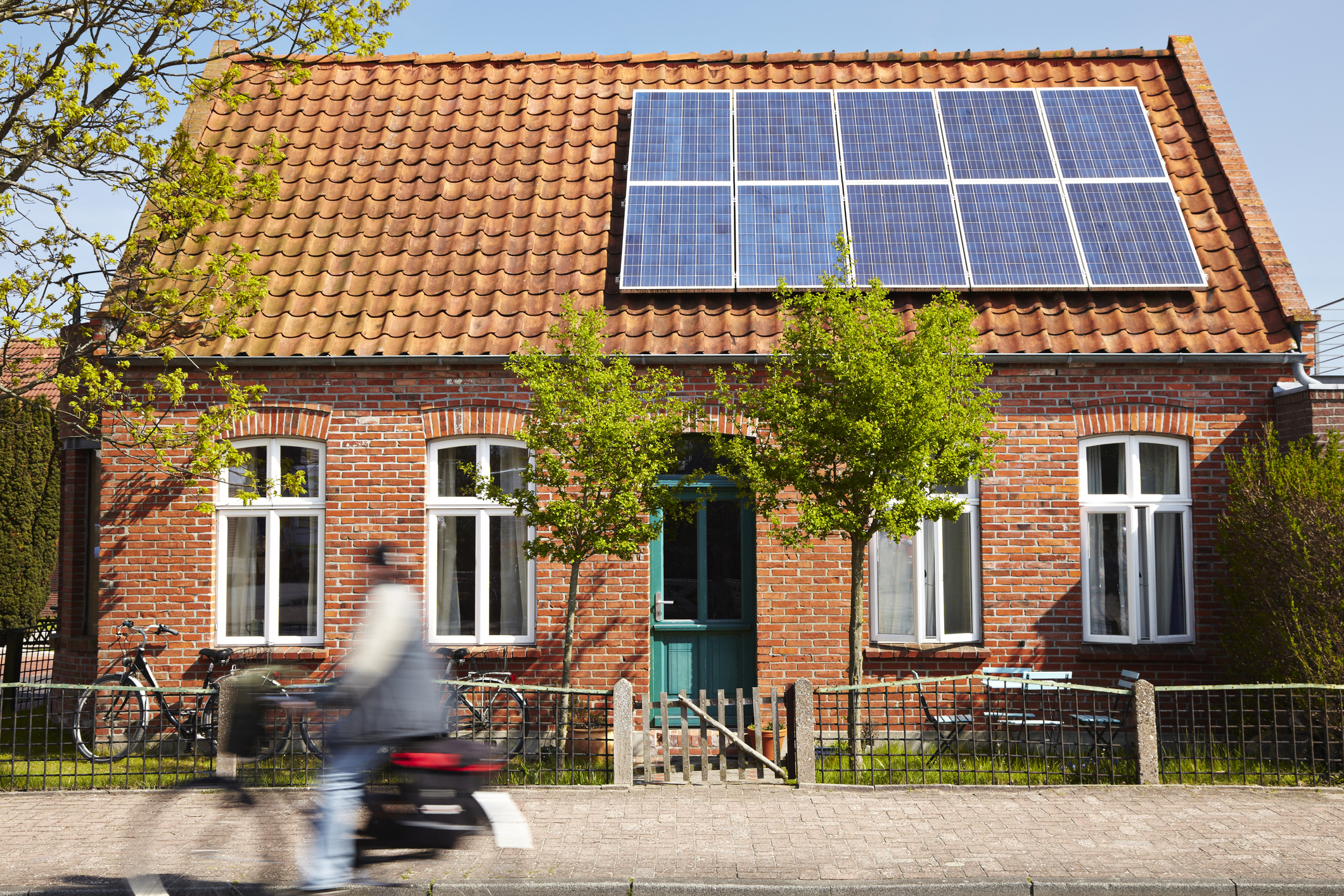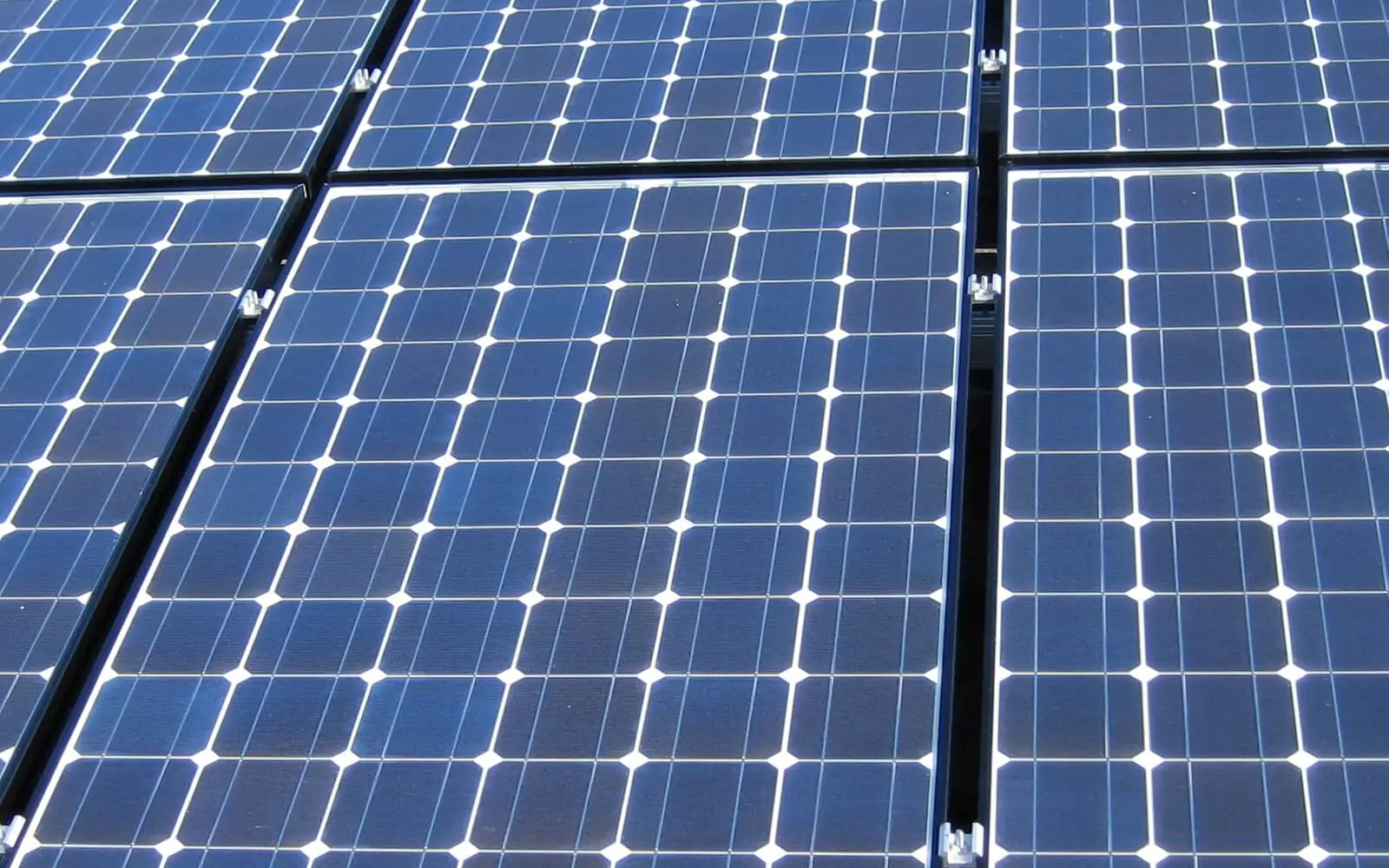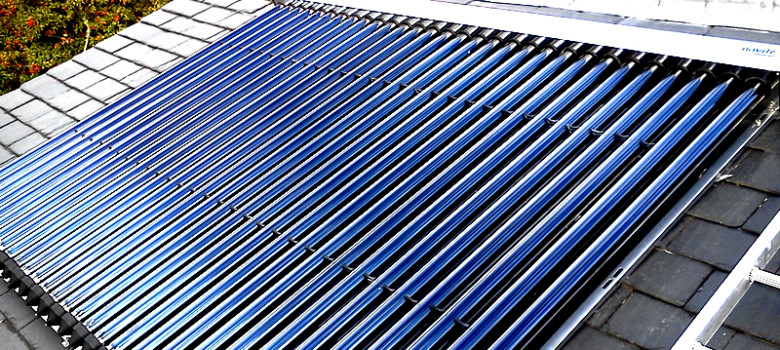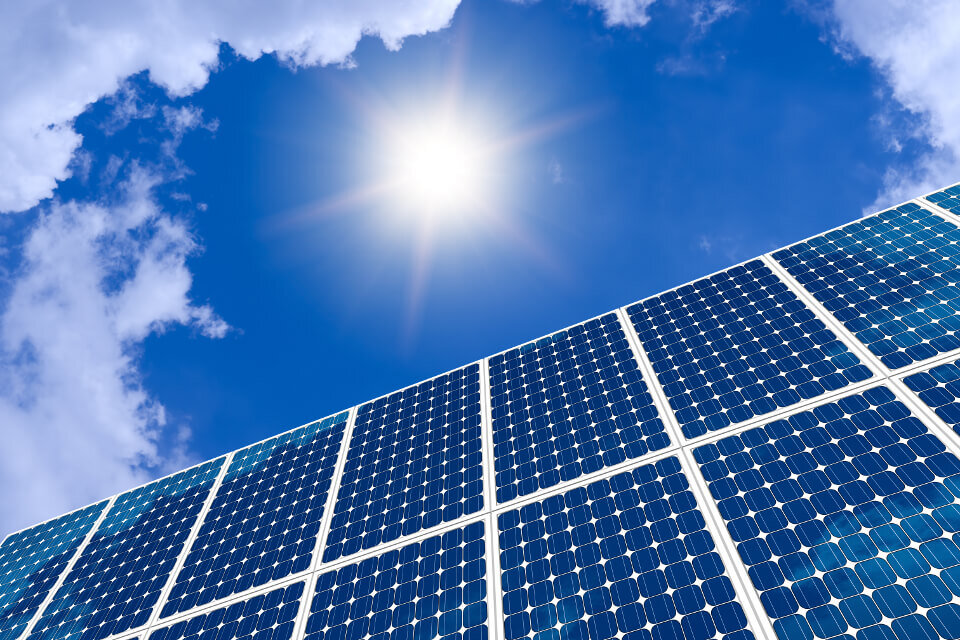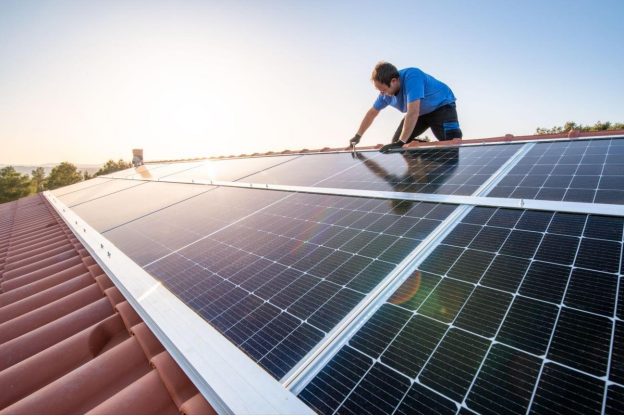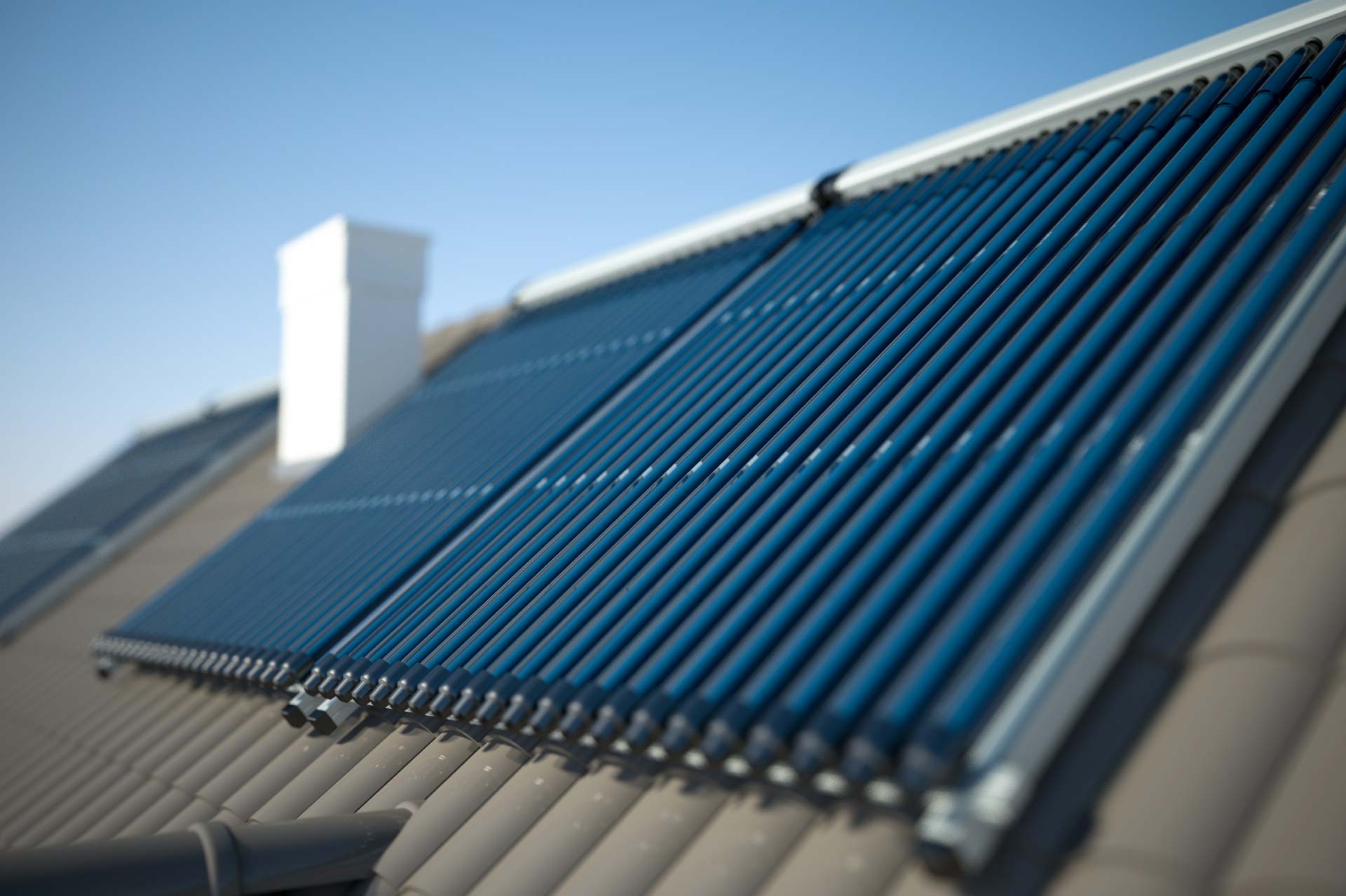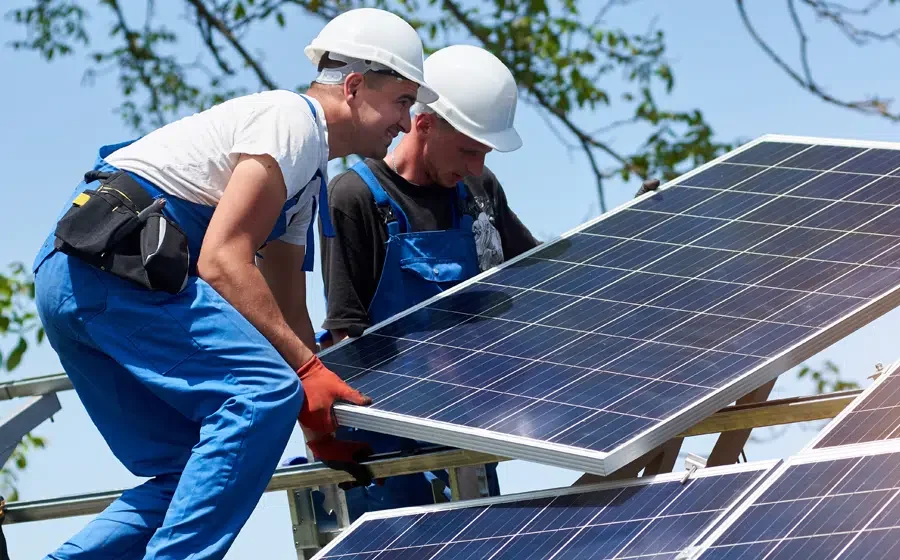- Solar Thermal can cost between £3,000 and £5,000
- They can cut the cost of hot water heating by up to 60%
- Solar Thermal can cut your carbon emissions by 400kg per year
If you’re considering a renewable energy solution to heat your household water and reduce your bills, solar thermal panels present an excellent option, particularly if you’ve recently invested in solar panels.
In this guide, we’ll delve into the details of solar thermal energy, helping you determine if it’s a fitting choice for your home.
If you’re also intrigued by the prospect of installing traditional solar PV panels and wish to explore the associated costs, simply complete this form. You’ll receive complimentary quotes from reputable solar PV suppliers.
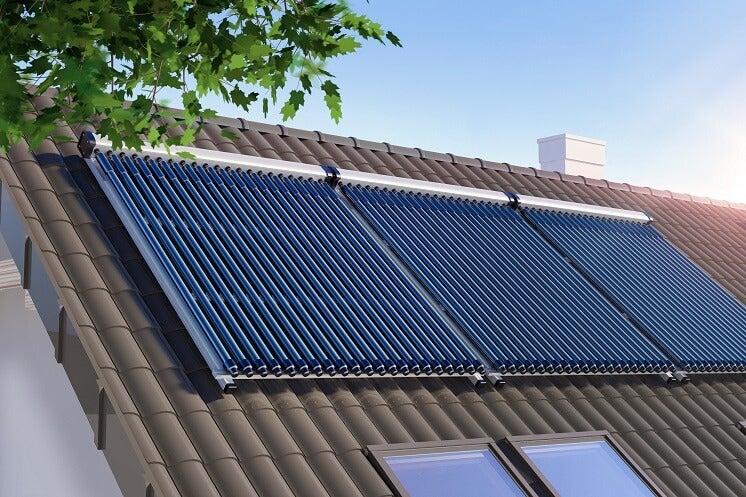
What's on this page?
What are solar thermal panels?
Solar water heaters, also referred to as solar thermal panels or collectors, harness the sun’s rays to heat household water. This heated water can be utilized for various daily tasks such as showering and washing clothes. Implementing this renewable system can significantly curtail your energy consumption and result in noticeable savings on your monthly bills.
How do solar thermal panels work?
Solar thermal systems utilize either flat plate panels or evacuated tube collectors to capture the sun’s warmth. Typically installed on the roof for optimal sun exposure, these units heat a liquid mixture of glycol and water, not the water used in the home. The heated glycol and water flow to a heat exchanger within a hot water cylinder or tank, transferring the heat to the water for household use. Integrating solar water heaters into an existing system is straightforward, as they can work alongside conventional boilers and immersion heaters, providing additional heat on cloudy days or further elevating water temperature if needed.
Types of solar thermal
There are four types of solar water heating systems, each differing in how they capture heat:
1. Active – Requires external electric power to activate pumps (not fully renewable)
2. Passive – Utilizes natural heat transfer from the sun to circulate hot water without electricity
3. Direct – Heats water directly through the solar panel/collector
4. Indirect – Heats water using a fluid (typically a mix of water and glycol) circulated between the rooftop thermal collector and a heat exchanger.
The two most common collectors for residential applications are flat plate panels and evacuated tube collectors.
Flat plate panels resemble solar PV panels, featuring a heat-absorption panel attached to multiple copper pipes through which water or transfer fluid passes. A sheet of glass covers this panel, providing both protection and insulation.
Evacuated tube collectors consist of numerous heat pipes surrounded by glass tubes, all of which are vacuum-sealed, providing air-tight insulation.
There are also hybrid solar panels, which use sunlight to generate both heat and electricity.
How much does solar thermal cost?
The average solar thermal system costs between £2,700 and £5,500 to install.
We know, this is a hefty sum of money – but solar panel costs are decreasing, and once the panels are installed, you can reap the renewable reward and watch your bills gradually decrease.
| Size of the system | Number of people in the house | Average cost |
|---|---|---|
2m² | 2-3 | £2,700–£3,200 |
3m² | 3-4 | £3,200–£3,500 |
4m² | 4-5 | £3,500–£4,000 |
5m² | 5-6 | £4,000–£5,000 |
6m² | 6-7 | £5,000–£5,500 |
Want to learn more? Check out our helpful page: Is Solar Thermal Worth It In The UK?
How many solar thermal tubes / panels do you need?
To generate sufficient hot water for a typical three-bedroom house, homeowners typically require two to three flat plate panels or approximately 20–30 individual evacuated tubes – typically sold in fixed sets of around 10 to 15 tubes.
In practical terms, homeowners should allocate about 2 square meters per household member for the installation of panels or tubes.
Additionally, most properties will necessitate a water cylinder roughly twice the size of a standard one. This expanded size is required to accommodate the heat exchanger system and store an ample supply of hot water for use during periods when the solar water heating system may be less effective, such as on cloudy days.
How much hot water can solar thermal provide?
During the winter, a solar water heater can contribute up to 25% of a home’s hot water requirements, while in the summer, this contribution can increase to 90%. Therefore, during the winter months, an additional water heating system may be required to meet the remaining hot water needs. Fortunately, solar water heaters are adaptable and can be seamlessly integrated with a boiler or an electric immersion heater, typically installed within the hot water tank or cylinder.
Want to learn more? Check out our helpful guide Can Solar Panels Heat A House In The UK?
How much can you save with solar thermal?
The potential savings from solar thermal systems vary throughout the year, with higher contributions during summer months and reduced effectiveness in winter. The amount saved also depends on the system being replaced. Here’s a breakdown of potential annual savings and carbon footprint reduction when swapping different systems for solar thermal, based on calculations from the Energy Savings Trust:
– Gas boiler: Save £125 and reduce carbon footprint by 330 kg
– Oil boiler: Save £140 and reduce carbon footprint by 465 kg
– Coal: Save £205 and reduce carbon footprint by 930 kg
– Electric boiler: Save £245 and reduce carbon footprint by 310 kg
– Liquefied petroleum gas (LPG): Save £135 and reduce carbon footprint by 370 kg
These figures are accurate as of August 2023.
Are there any government grants for solar water heaters?
As of now, the exclusive government grant applicable to solar water heaters is the Home Upgrade grant. This grant is accessible in 45 local councils across England and can contribute up to 10% of the funding for solar water heaters.
The grant is only available to low-income households in the councils that applied for the scheme. To be eligible, homes also need to be off the gas grid, and have an Energy Performance Certificate (EPC) between D and G.
The absence of government grants for solar water heaters can be attributed, in part, to their lower popularity compared to other low carbon technologies like solar PV panels or heat pumps. Additionally, their effectiveness often requires pairing with another heating system.
Want to learn more about solar incentives? Check out our helpful page: UK Solar Panel Grants, Funding & Schemes.
Is your property suitable for solar thermal?
Similar to solar PV panels, solar thermal systems perform optimally when installed on properties with a south-facing roof, ensuring prolonged exposure to sunlight. In cases where this orientation is not feasible, installing solar thermal on east or west-facing roofs still provides some heat. Adequate roof space, ranging from two to five square meters, is necessary for accommodating either solar flat plate panels or tubes. Additionally, sufficient indoor space is required for a hot water tank or cylinder, if not already in place.
It’s crucial to consider that homeowners residing in listed or conservation area properties may face restrictions on installing solar thermal. This is due to limitations on altering the appearance of these buildings, making obtaining planning permission for solar water heaters challenging.
Solar thermal maintenance costs
Upon covering the initial investment, you’ll be pleased to know that most solar thermal systems demand minimal maintenance.
In contrast to boilers, solar thermal systems only require servicing every 3-7 years, unless there are any suspected leaks that warrant investigation. While some adjustments may be needed over time, these minor tweaks are budget-friendly. Topping up the antifreeze, crucial for winter protection, is necessary, and fortunately, this task occurs every 3-5 years, with a cost of approximately £100.
Monitoring the system’s heat pumps is also advisable. If wear and tear is evident, the replacement cost for these pumps is approximately £90.
Despite the upfront expense of installing solar thermal, you shouldn’t anticipate any unpleasant financial surprises along the way.
How many homes In the UK have solar thermal?
As of August 2023, MCS data reveals that approximately 43,667 homes in the UK have incorporated solar water heaters.
This figure significantly trails behind the adoption of other low-carbon heating systems, notably air source heat pumps. To put it in perspective, there are around 1,574,541 air source heat pumps installed across the UK according to MCS.
This discrepancy in popularity could be attributed, in part, to the perception that heat pumps offer a more dependable form of low-carbon technology, typically eliminating the need for a winter backup unlike solar water heating systems.
How to get the most out of your solar thermal
Ensure effective insulation for your hot water cylinder and pipes to minimize heat loss, enhancing the overall efficiency of your system.
Opt for a larger cylinder, especially during colder months when solar panels might absorb less heat. This allows you to store more hot water, ensuring a steady supply when the panels are inactive.
Monitor the temperature regularly, ensuring your cylinder reaches above 60ºC at least once a week to prevent bacteria build-up in the water.
Practice water conservation by adopting habits such as evening showers, which are more efficient than allowing hot water to lose heat overnight and reheating the boiler the next morning. Consider installing a water meter to track your water consumption.
Next steps
Solar thermal proves to be a worthwhile investment for suitable properties, offering significant annual savings on bills. However, its drawback lies in its limited capacity to heat only household water. During colder months, reliance on the boiler is necessary to supplement the solar panels. While this approach reduces carbon footprint and lowers bills, the scope of solar thermal energy remains somewhat restricted.
In contrast, solar panels demonstrate greater effectiveness, with 65% of people expressing a willingness to purchase a home equipped with solar panels, as indicated by our latest National Home Energy Survey.
Get FREE Solar Quotes
Find out how much a solar solution would cost you
Complete A Short Form – Receive Free Quotes – Compare & Save
Get FREE Solar Quotes
Find out how much a solar solution would cost you
Complete A Short Form – Receive Free Quotes – Compare & Save



